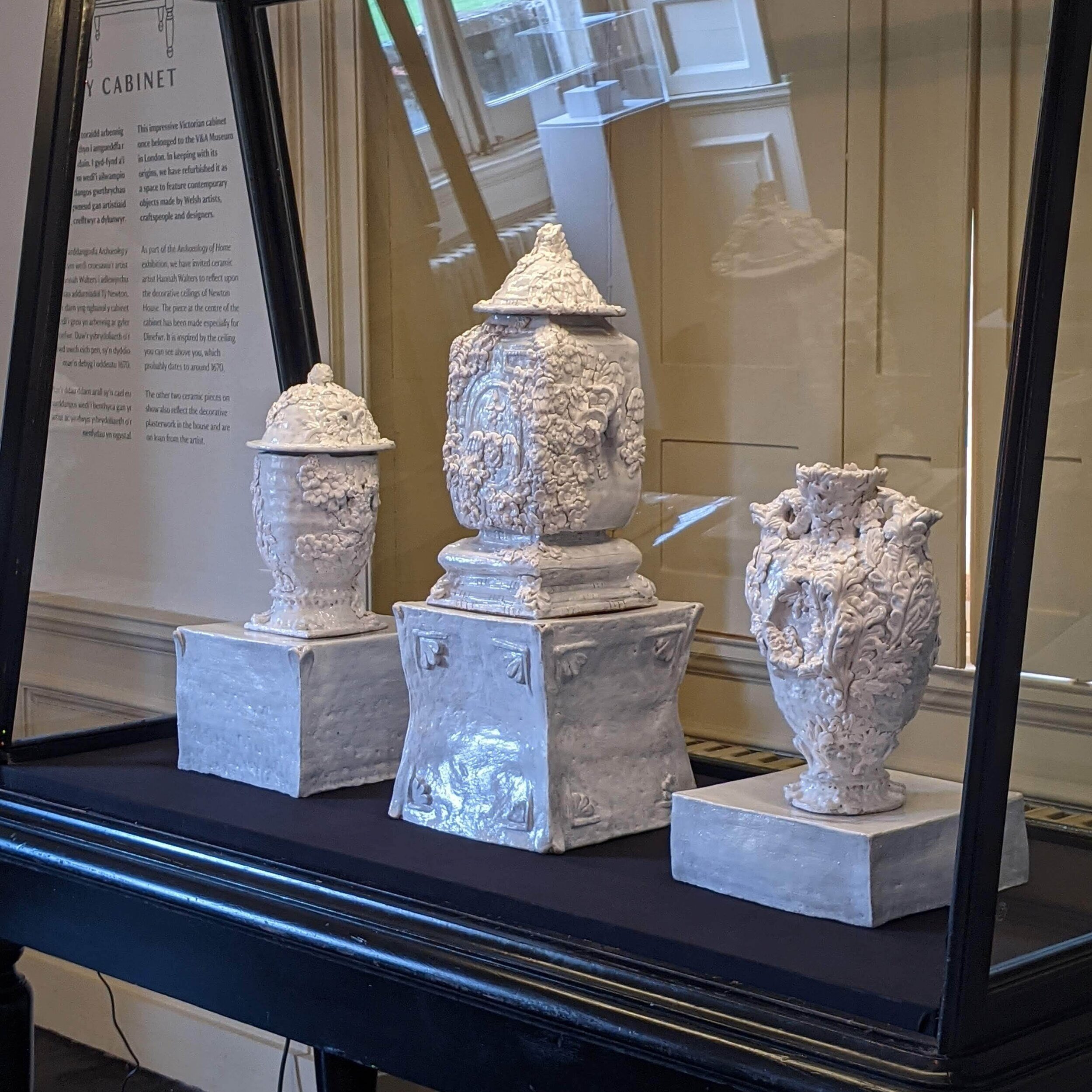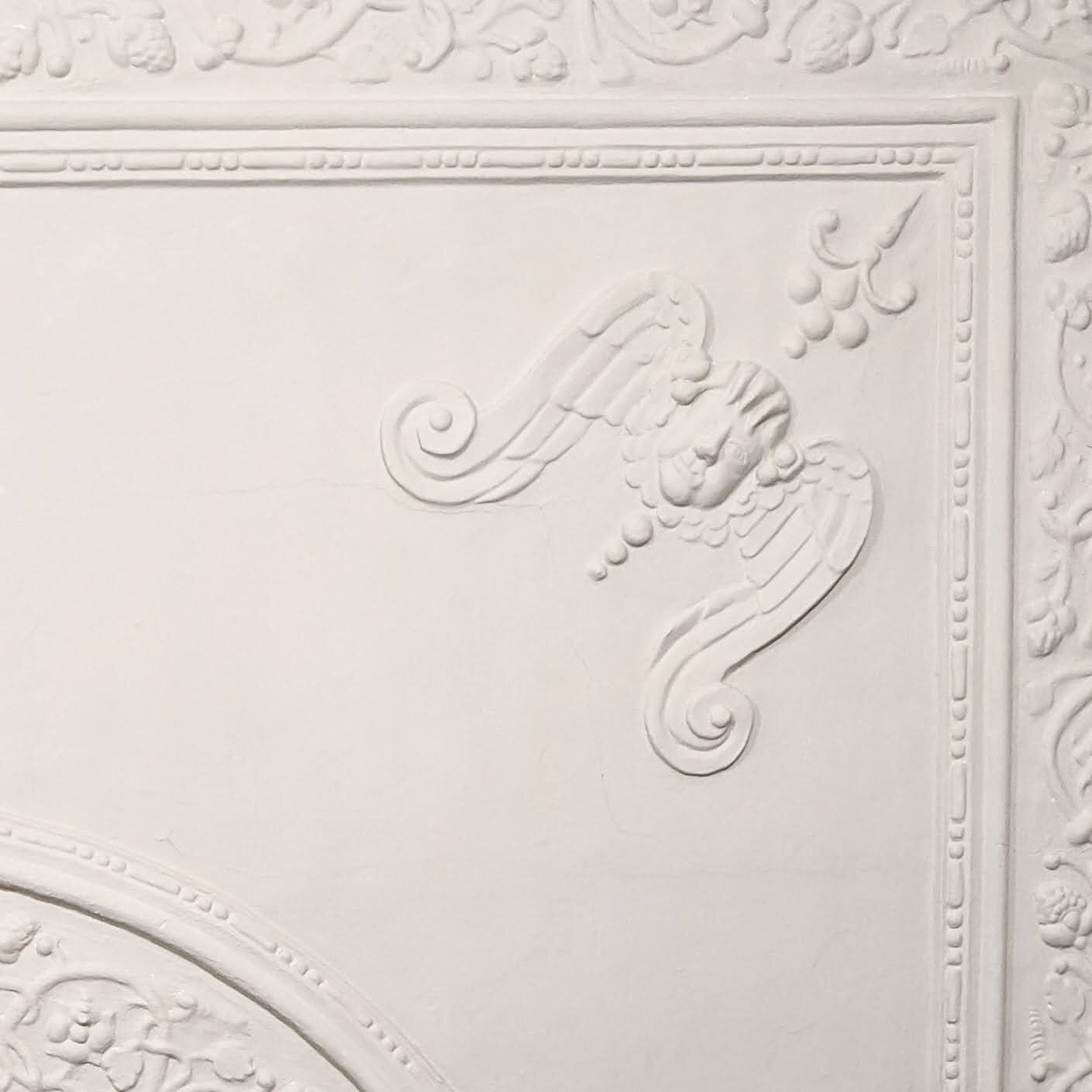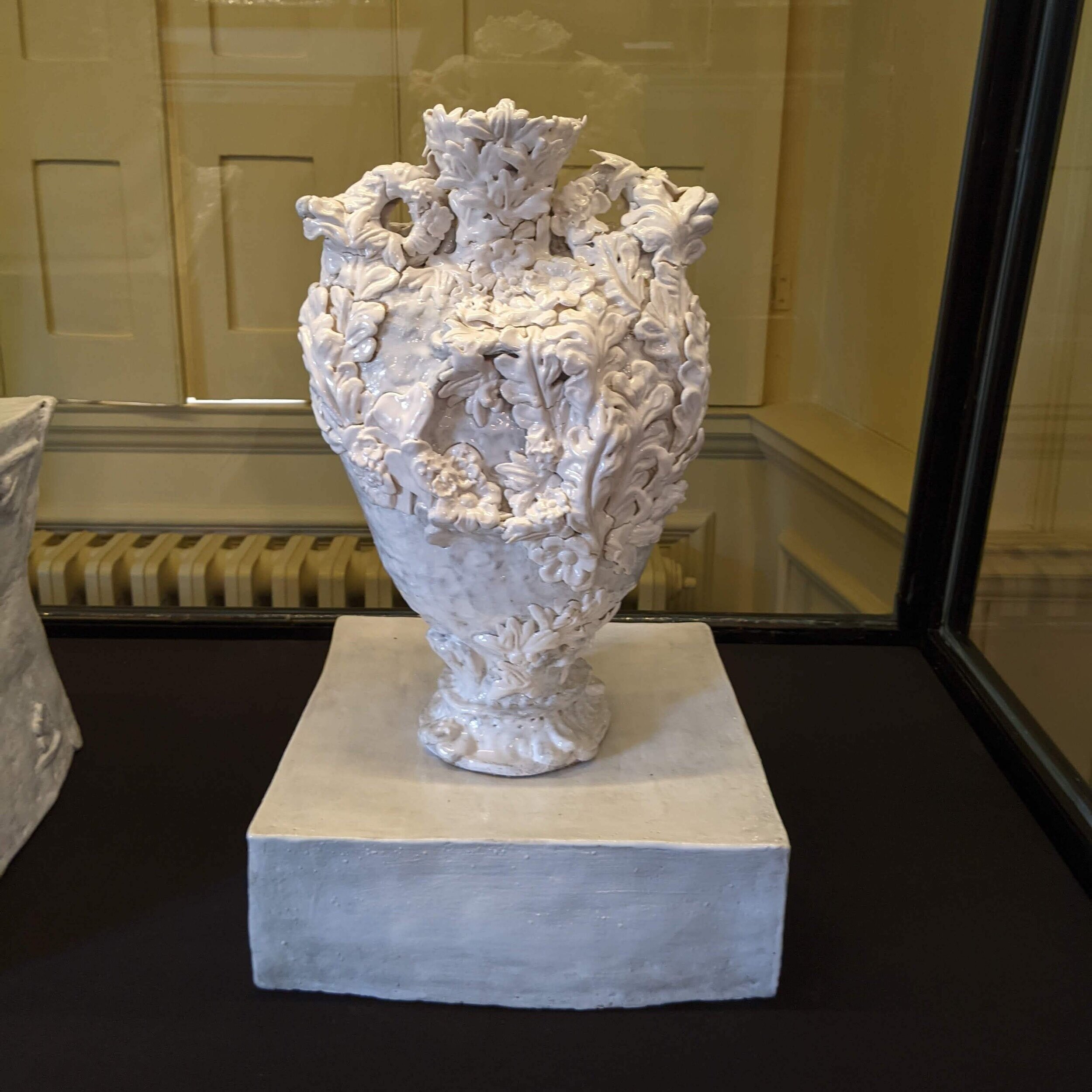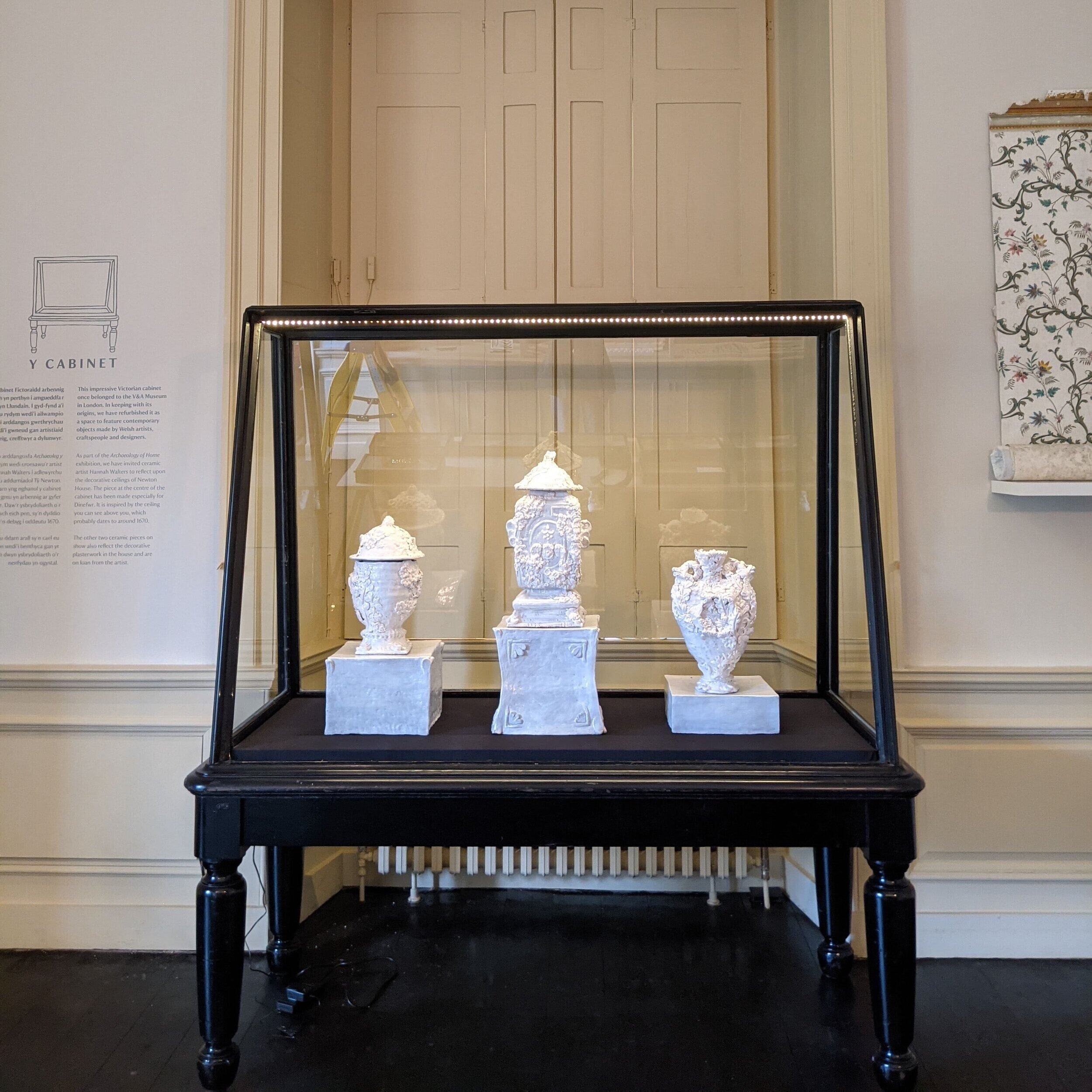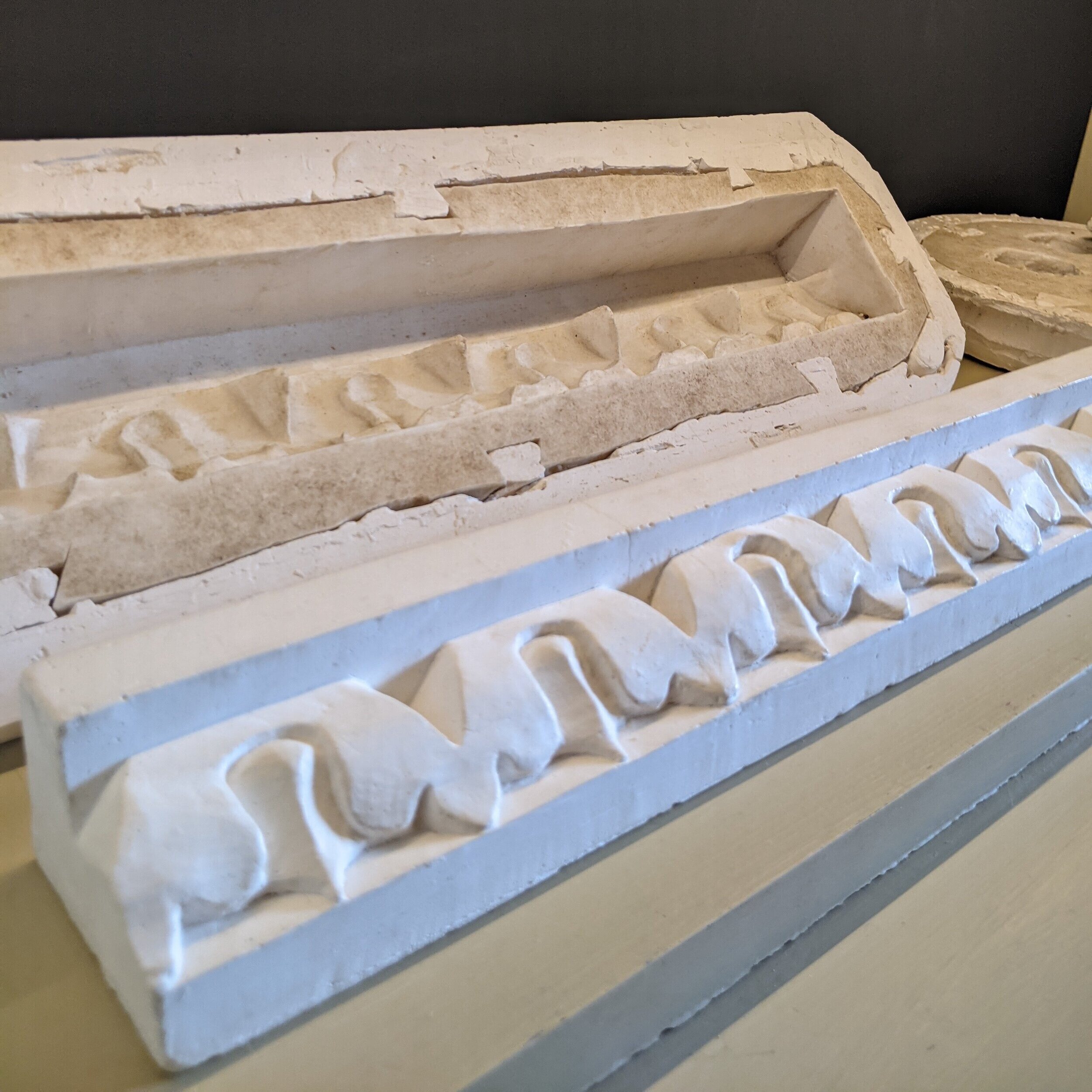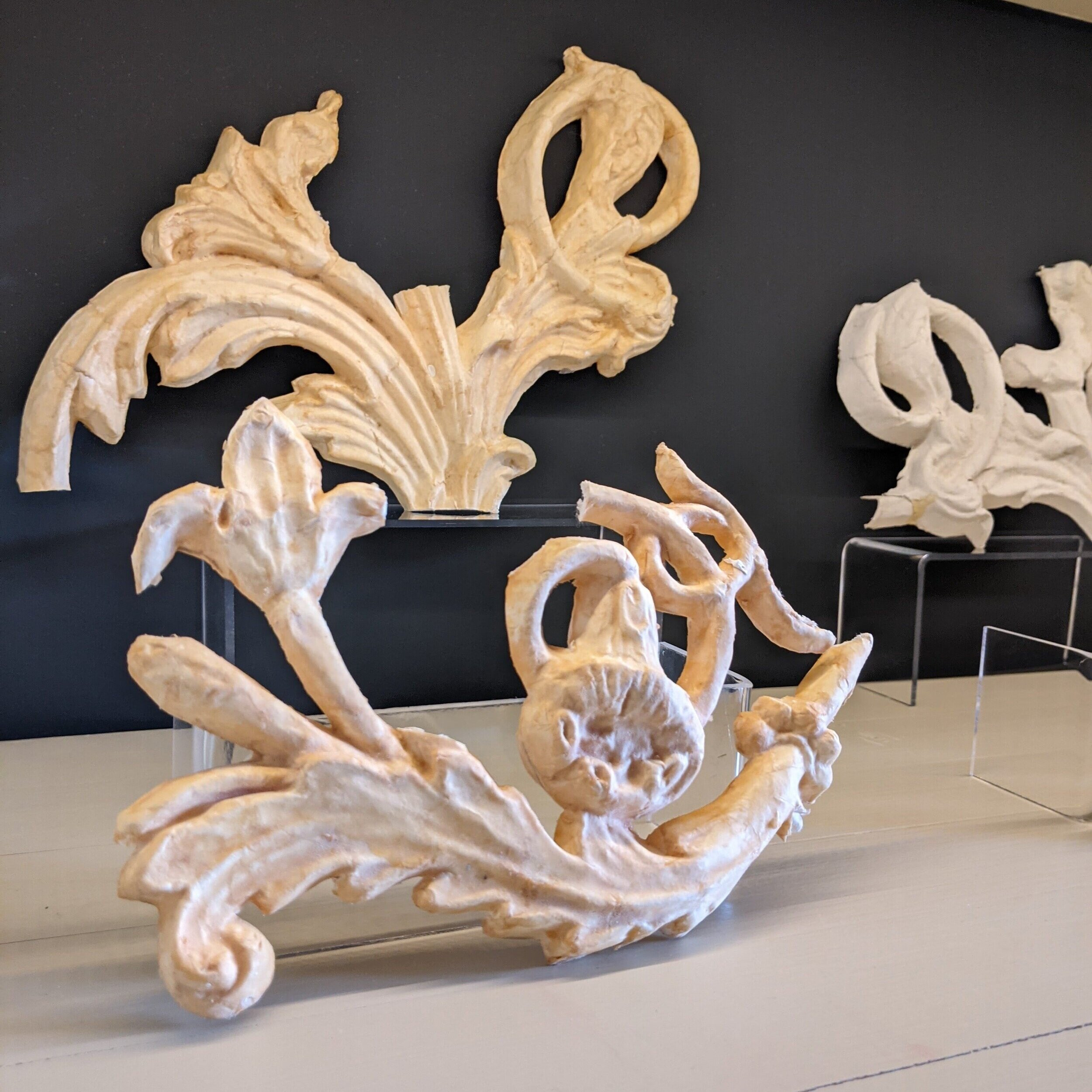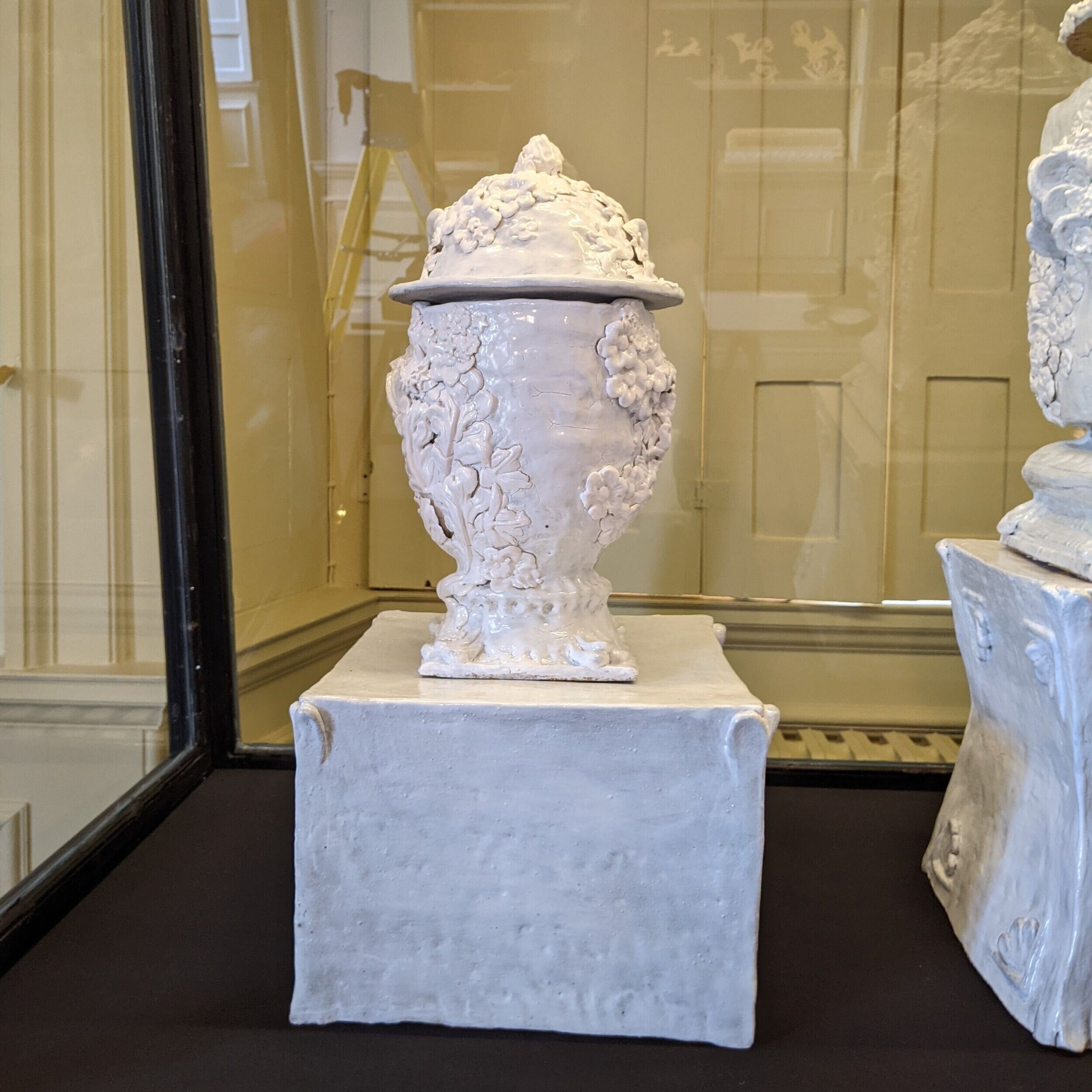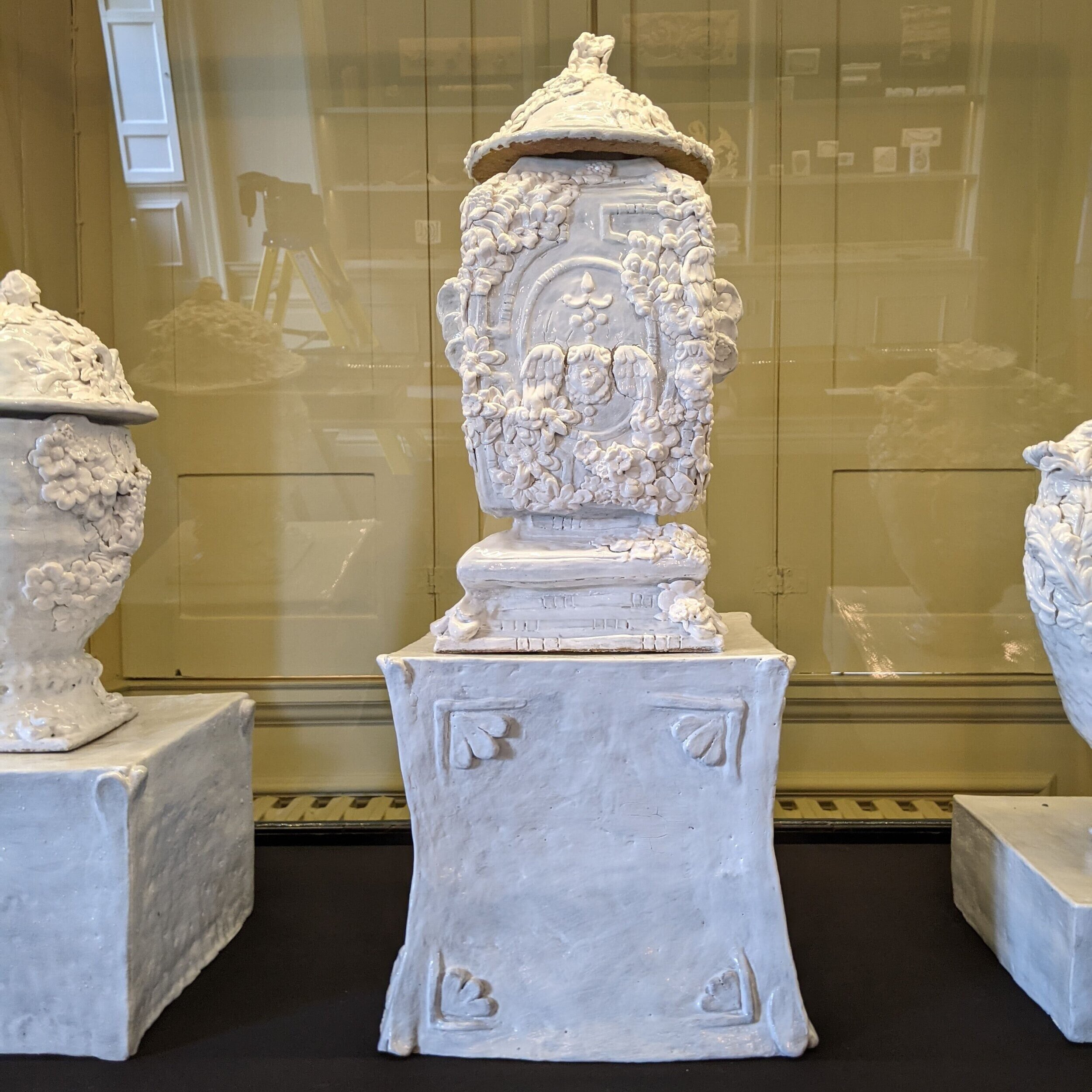Y Cabinet
‘The Fragmented Urn // Yr Wrn Darniog’
2021
The ceilings in Newton house show a clash of different styles and eras, from Jacobean to Victorian. There is not only beauty in them but real reflection of humanity and society, from the moulds the plasters had to use to the whims of fashion that dictated their design. Walking from room to room bring new delights from these twisting complicated borders.
My fascination with the handmade, such as those ceilings, came from the years I have spent working in an antiques centre. Those years nurtured a true appreciation of objects and the handmade, in particular with Welsh Nant Garw porcelain and Delftware. They evidence the West’s obsession with porcelain, the power of social status symbols, yet their value and desirability rises and falls according to interior trends. Viewing objects through this lens allows me to play with this ornate antique aesthetic with a contemporary understanding of imagery.
My ceramic work, just like these ornate ceilings, are an amalgamation of different styles. This can result in work such as a traditional vase, based on the forms of delicate Nant Garw porcelain, being built up with a crude array of contemporary sprigs.
My choice of material is integral to the piece. The work is made from both porcelain, mixing a naive and playful style with a traditional and valuable material, as well as crank clay, a crude and heavy material. Sometimes jarring and often humorous, this clashing of cultural reference and material is both satisfying and unnerving all at once. My work is homage to the continued relevance of historical objects as reflective of the society in which they are both made and viewed.
Text from National Trust (Link)
A new feature at Newton House, Dinefwr, showcasing the work of contemporary Welsh craftspeople, artists and designers. Launching with Hannah Walters as our first artist. Y Cabinet will become a permanent feature within Newton House. This ongoing programme will feature work shown in an elegant Victorian display cabinet that came originally from the V&A Museum in London
